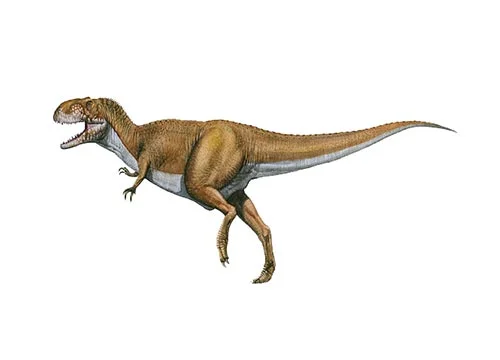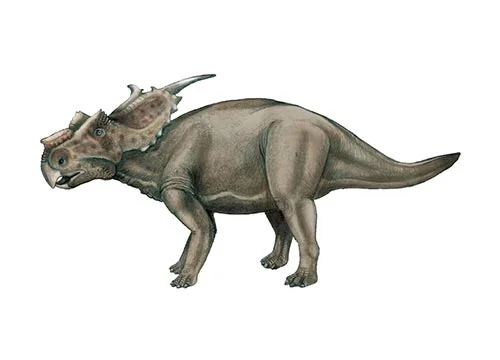Hesperosaurus (Western lizard)

Hes-per-o-sore-us
K. Carpenter, C. A. Miles & K. Cloward - 2001
Herbivore
Estimated 6 meters long
Armoured Dinosaur
H. mjosi (type)
USA - Wyoming - Morrison Formation
Late Jurassic, 155-148 million years ago
Hesperosaurus Facts
Hesperosaurus, meaning “western lizard,” is a genus of herbivorous dinosaur that lived during the Late Jurassic period, approximately 155 to 148 million years ago. It is known from fossils found in what is now the western United States, including Colorado and Wyoming.
Hesperosaurus was a medium-sized dinosaur, measuring around 6 meters (20 feet) in length and weighing around 1,000 kilograms (2,200 pounds). It was a member of the stegosaur family, which are known for their distinctive bony plates and spikes along their backs and tails.
Like other stegosaurs, Hesperosaurus had two rows of large, flat plates along its back, which were likely used for display or temperature regulation. It also had four long spikes at the end of its tail, which may have been used for defense against predators.
Hesperosaurus is known from only a few fragmentary fossils, which makes it difficult to determine its exact behavior or ecology. However, its anatomy suggests that it was a slow-moving herbivore, and likely fed on low-growing vegetation.
The discovery of Hesperosaurus and other stegosaurs has provided valuable insights into the diversity and evolution of this group of dinosaurs, which were an important part of Jurassic and early Cretaceous ecosystems. Despite its relatively limited fossil record, Hesperosaurus remains an intriguing and important part of the evolutionary history of these fascinating animals.



